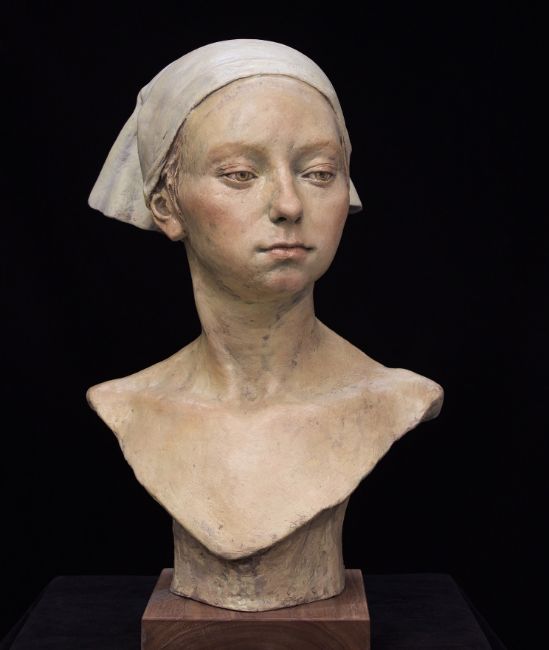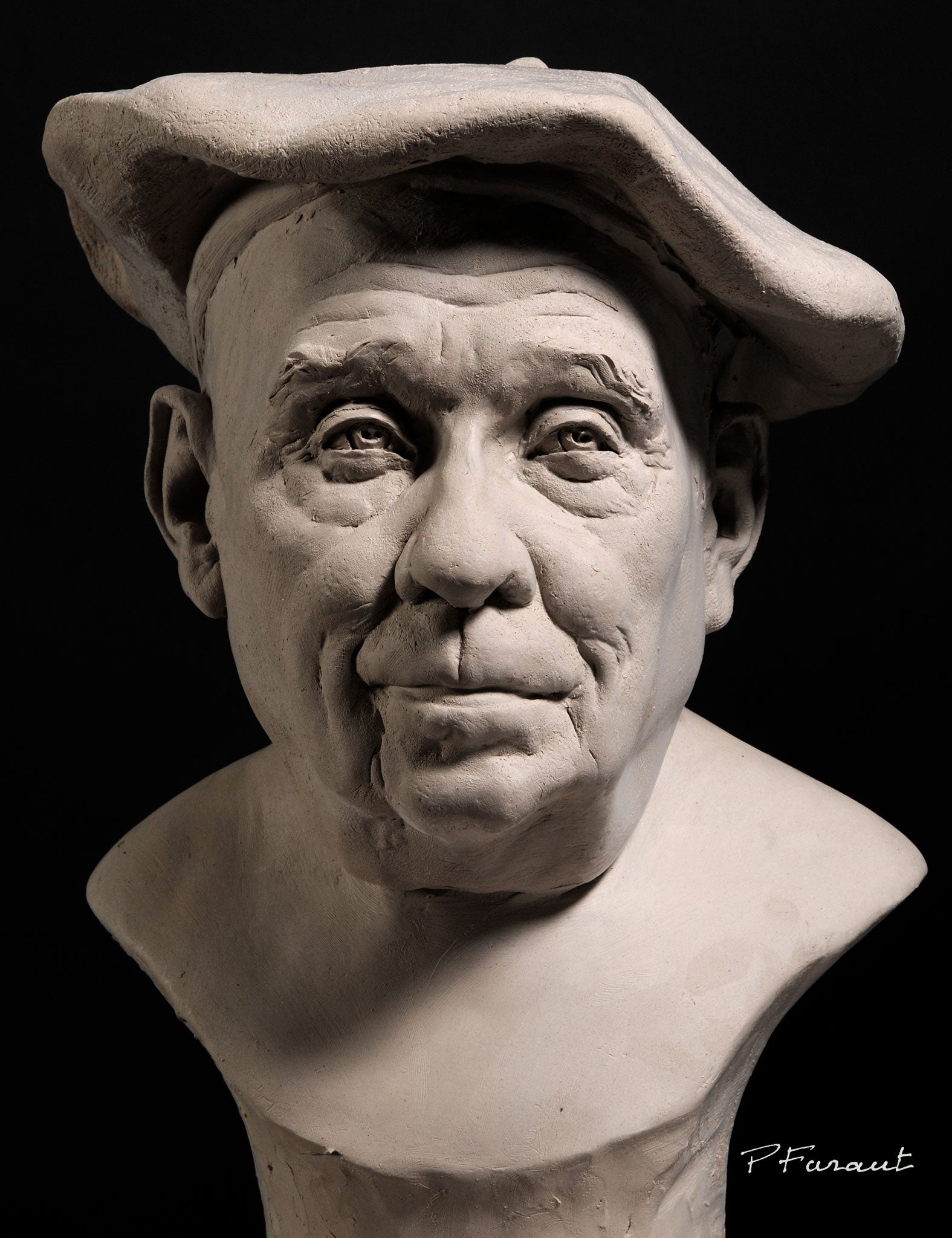Master of Faces: Check Out the Globe of a Portrait Sculptor
Wiki Article
The Advancement of Sculptures: From Ancient to Modern
The Advancement of Sculptures: From Old to Modern. Bronze Sculptures.Sculpture, one of the earliest forms of art, has actually been an essential component of human world for centuries. From the old worlds of Egypt and Greece to the contemporary age, sculptures have advanced, reflecting modifications in creative methods, products, and cultural influences. This journey through time traces the development of sculptures, checking out the shifts stylishly, topic, and imaginative expression.
Beginning with the ancient globe, sculptures crafted from rock and later on bronze caught the essence of deities, leaders, and everyday life. The Renaissance duration observed a rebirth of classical sculpting methods, as artists looked for to mimic the elegant kinds of old Greek and Roman sculptures (Portrait Sculptor). In the contemporary period, artists tested traditional limits, welcoming abstraction and experimentation with brand-new products
This expedition will explore the varied development of sculptures, exposing the rich tapestry of creative expression throughout different durations and societies.

Ancient Sculptures: From Rock to Bronze
Ancient sculptures transitioned from being sculpted out of stone to being cast in bronze. Rock sculptures, while excellent in their own right, were restricted by the nature of the product. Contemporary Sculptures.The intro of bronze as a tool for sculptures caused a change in imaginative expression. Bronze supplied sculptors the chance to produce detailed and realistic kinds that were not feasible with stone. The process of casting bronze permitted the production of several copies of a sculpture, making it possible for wider distribution and conservation of these imaginative work of arts.
The shift from stone to bronze also saw a shift in the topic of sculptures. While stone sculptures predominantly illustrated gods, sirens, and mythical numbers, bronze sculptures started to reflect a broader series of topics, including day-to-day individuals and animals. This expansion of topic showcased the flexibility and versatility of the bronze medium.
Renaissance Revival: Sculpting in the Classic Design
The Renaissance rebirth of sculpture experienced a rebirth in the timeless style, building upon the improvements made during the transition from rock to bronze in old sculptures. Throughout this duration, artists sought to recreate the classical aesthetic and suitables of appeal that prevailed in ancient Greek and Roman sculptures.One of the vital features of the Renaissance resurgence was the focus on naturalism and the human kind. Sculptors like Donatello and Michelangelo make every effort to capture the physiological information and expressions of their topics with unmatched accuracy. They researched the body and incorporated their observations right into their sculptures, leading to natural and reasonable depictions.
Another vital element of the Renaissance resurgence was the exploration of perspective and deepness. Musicians utilized strategies such as contrapposto, where the weight of the body is shifted to one side, producing a feeling of motion and dynamism. They also trying out different products, including marble and bronze, to achieve a level of refinement and details in their sculptures.

Innovation and the Avant-Garde: Damaging Conventional Boundaries
During the Innovation and Avant-Garde movements, artists pressed the borders of standard imaginative conventions. This duration, which emerged in the late 19th and early 20th centuries, saw a dramatic change in the means musicians approached sculpture. Rejecting the idea of art as mere replica, modernist sculptors sought to check out new types, materials, and principles.
Among the vital features of modernist sculpture was the emphasis on abstraction. Carvers moved far from reasonable depictions and rather concentrated on recording the significance of the subject via streamlined types and geometric forms. This departure from traditional depiction enabled artists to express their emotions and ideas in a much more subjective and personal way.

Contemporary Sculptures: Exploring New Materials and Concepts
With a concentrate on exploring new materials and ideas, contemporary sculptures have revolutionized the area of art. Artists today are pushing the boundaries of traditional sculpture by utilizing ingenious products and trying out with abstract principles. These sculptures challenge standard ideas of definition, materiality, and kind, inviting visitors to involve in a brand-new and thought-provoking creative experience.Contemporary artists are welcoming a vast array of products, including plastic, glass, metal, and also raw material. They are not restricted to the conventional tool of rock or clay, permitting better flexibility of expression and testing. This shift towards non-traditional products has opened new opportunities for artists to develop sculptures that are vibrant, interactive, and visually striking.
In addition to discovering new materials, modern sculptures additionally delve right into complicated and abstract concepts. Musicians are now discovering themes such as identity, social problems, and the environment, using sculpture as an effective tool for social discourse and introspection. These sculptures test audiences to think seriously and engage with art on a much deeper degree, sparking discussions and prompting emotional reactions.
Global Influences: Sculptural Practices From Around The Globe
Sculptural traditions from numerous regions of the world have actually substantially formed the evolution of sculptures throughout history. The worldwide impacts on sculpture have actually varied and have added to the richness and selection of imaginative expressions. From the ancient civilizations of Egypt, Greece, and Rome to the detailed carvings of Oriental societies, each area has developed its unique sculptural customs that have affected musicians throughout time.In ancient Egypt, sculptures were produced largely for funerary and religious objectives. The iconic sculptures of gods and pharaohs, such as the Great Sphinx and the breast of Queen Nefertiti, display the Egyptians' proficiency of stone carving and their belief in the immortality.

In ancient Rome, sculpture offered both political and imaginative functions. Roman sculptures often shown emperors, generals, and mythological figures, reflecting the power and splendour of the empire. The marble sculpture of Augustus of Prima Porta and the monumental Arch of Constantine are notable instances of Roman sculptural success.
Asian sculptural customs, specifically in India, China, and Japan, have likewise had a profound impact on right here the advancement of sculptures. Japanese sculptures, affected by Buddhism, stress simpleness and tranquility, seen in the calm statues of Buddha and the classy art of bonsai.
The worldwide impacts on sculpture continue to evolve in the modern-day period. As we look to the future, it is particular that the worldwide impacts on sculpture will certainly proceed to shape and redefine this ancient art type.
Verdict
In final thought, the advancement of sculptures has actually seen a change from old stone and bronze works to the classical rebirth during the Renaissance. This was complied with by the splitting of typical borders with modernism and the avant-garde motion. Today, modern sculptures check out brand-new materials and principles, while also drawing ideas from global sculptural traditions. The journey of sculptures mirrors the ever-changing artistic expressions and cultural influences throughout history.From the old human beings of Egypt and Greece to the modern-day period, sculptures have actually developed, mirroring changes in artistic strategies, materials, and cultural influences.Beginning with the old globe, sculptures crafted from rock and later on bronze caught the essence of divine beings, rulers, and everyday life.Old sculptures transitioned from being sculpted out of stone to being cast in bronze. While stone sculptures predominantly shown gods, goddesses, and mythical numbers, bronze sculptures started to show a wider array of subjects, including day-to-day individuals and animals.In final thought, the evolution of sculptures has seen a change from ancient rock and bronze works to the classical revival throughout the Renaissance.
Report this wiki page